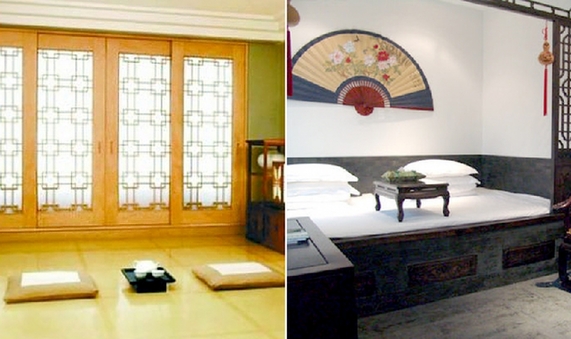Mocking South Korea won't make us any smarter
- By Wang Yanhu
 0 Comment(s)
0 Comment(s) Print
Print E-mail China.org.cn, March 25, 2014
E-mail China.org.cn, March 25, 2014
The South Korean government is mulling over whether to apply for a UNESCO Intangible Cultural Heritage (ICH) status for its "ondol," a traditional under-floor heating infrastructure known as "kang" in China.
|
|
|
Ondol or Kang? [File photo] |
"We have decided that the 'ondol' technology is worth being protected as a World Heritage for all mankind," the South Korean Ministry of Land, Infrastructure and Transport stated in an announcement published on March 16.
The Korean people seem to be obsessed with applying for ICH. They have applied for the ICH status to be extended to Gangneung Danoje Festival (known as Dragon Boat Festival in China), Korean Kimchi (pickled cabbage), as well as the Principles and Practice of Eastern Medicine. This time around it concerns under-floor heating. Not surprisingly, the announcement quickly attracted the contempt and ridicule from many disgruntled Chinese.
Some remarked, "Isn't their 'ondol' exactly the same as our kang in the northern region? They must have borrowed the idea from us." Other people say that the idea behind kang is simply too common for an ICH application.
Indeed, their profound cultural heritage creates a sense of great pride amongst the Chinese. China possesses more than 3,000 years of recorded history, marked by many great inventions. Yet that does not necessarily mean that all artifacts related to our daily life and culture originated from Chinese soil. At the very least, we shouldn't jump to conclusions without having sufficient evidence.
Take kang for example. Though this under-floor heating architecture is widely used in China's northern region, it is yet to be proven whether it was invented by the Chinese. Gu Yanwu, one of the Five Great Qing (1644-1911) scholars mentioned in one of his works that "people in northern region make bed with clay. The bed is hollow inside so that people can stoke a fire underneath it to keep the bed warm. Such architecture is called kang."
Gu also pointed out that "such architecture wasn't mentioned in ancient books," suggesting there were no written records to prove China had kang before Gu. In "The Old Book of Tang," a 10th-century history book about the Tang Dynasty (AD 618-907), there's a chapter about Goryeo, a Korean dynasty established in 918. The chapter mentions a heating architecture called "keng" on the Korean Peninsula, which functions along the same lines as kang.
Since there's no evidence that kang was invented by the Chinese, there's no reason to denounce South Korea's seeking an ICH application for its "ondol." Moreover, the kang refers specifically to a raised structure in the bedroom that serves both as a sitting space and bed for the family, whereas the Korean "ondol" signifies a heating passage beneath the floor of the entire room. They are not exactly the same thing.
Is it worthwhile to seek UNESCO ICH status for either though? From a cultural point of view, its power to survive the transition from an agricultural civilization to an industrial one in itself reflects its importance. The UNESCO ICH status can help to promote the development of related industries.
Mocking South Korea's "ondol" ICH application won't make us any smarter. China possesses a vast cultural legacy, but the Chinese people lack the sufficient cultural consciousness. The reason why cultural heritage is so valued is that you can tell a nation's vicissitudes from them. In regards to South Korea's "ondol" ICH application, what we need is reflection, not cynicism.
The author is a news commentator.
The article was translated by Li Huiru. Its original unabridged version was published in Chinese.
Opinion articles reflect the views of their authors, not necessarily those of China.org.cn.







Go to Forum >>0 Comment(s)